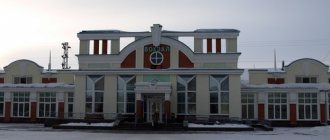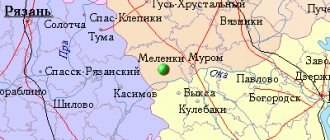The sound C belongs to the whistling group, but its articulation is more complex than that of S and Z. Correction begins after establishing the correct pronunciation of other whistlers. Because the desired articulatory structure will be formed, which is the basis for sound production.
Phoneme C, like other sibilants, appears early, and if at the age of three the child has not mastered correct pronunciation, contact a speech therapist or start practicing on your own.
The sound C is the most complex of the whistling group, because it combines C and T. Its production may require more careful preparation if there is distortion of C or T. Correctly composed tasks for correcting sound pronunciation will help make the child’s speech beautiful and literate.
Features of articulation
Normally, when pronouncing C, the lips are in the position of a slight smile, the teeth are visible. They are slightly closer together, there should be a small gap between them. The tip of the tongue should be made wide and placed in the lower oral cavity. And its side edges touch the upper teeth.
Feature of the articulation of the sound C - the front part of the tongue should take a position for several seconds as for pronouncing T. In this position, together with the alveoli, the tongue forms a gap, and when exhaling, the stream turns out to be strong, cold, as when pronouncing S. Pay the child’s attention to the peculiarity of the exhaled stream: it not just directional, but jerk-like. When pronouncing this phoneme, a person pushes out air. The vocal cords are open and do not work, so the sound C is a dull consonant.
Articulation of the sound “C”:
- lips are slightly tense and stretched;
- there is a small gap between the incisors;
- the tip of the tongue is pressed against the lower incisors;
- at the first moment of articulation, the anterior part of the back of the tongue is raised and closes with the anterior edge of the hard palate;
- at the second moment of articulation it descends, forming a gap with the palate;
- the middle part of the back of the tongue is raised, the back part is lowered;
- the lateral edges of the tongue are pressed against the upper molars;
- the soft palate is raised (C - oral sound);
- vocal folds are open (Ts – dull sound).
Types and mechanisms of violations
Incorrect pronunciation of a whistling group is called sigmatism, and replacement in speech with other sounds is called parasigmatism. Sigmatisms differ in the mechanisms of the disorder. The reasons are the structural features of the organs of the articulatory apparatus.
These include:
- malocclusion;
- weak or increased muscle tone of the tongue;
- cleft lip, palate.
The listed anatomical features lead to disruption of articulatory motor skills, which is one of the reasons for incorrect pronunciation. The most common reason is incorrect tongue position. If it is located between the teeth, then speech will be lisping. He may take a position to pronounce T or S, then the phoneme will sound unclear.
The tongue may move to the side and the air stream will not pass through the center, but through its side edge, resulting in a “squelching” effect. Or it may rise strongly towards the sky, causing the air stream to escape through the nose and speech to sound nasal. The articulation may be similar to the articulation of sibilants, and C will sound like F.
Sigmatisms are also signs of the following speech disorders:
- dyslalia;
- dysarthria;
- rhinolalia;
- alalia.
In addition, the reasons for sound distortion can be social:
- When communicating with a child, adults distort speech, resulting in the so-called lisp. Such communication can be maintained until the child begins to speak. He must hear the correct pronunciation of sounds so that later his speech will be literate.
- The child communicates with adults or children who have difficulties with sound pronunciation and imitates their speech. It is necessary that these people begin to correct their speech, or try not to use words that have a “difficult” sound. Especially if you are already going through the automation stage.
Most often, C is replaced with other sibilants or with T. This is due to the fact that it combines two sounds, so if a child’s phonemic processes are not sufficiently developed, then he may not be able to distinguish the desired phoneme from others due to similar acoustic and articulatory features. And this is also due to incorrect pronunciation. Corrective work depends on the cause of the appearance of sigmatisms and parasigmatisms.
Speech diagnostics
To determine the cause of the violation of sound pronunciation, it is necessary to make a diagnosis of speech development. The speech therapist begins his work by examining the articulatory apparatus: appearance, motor skills. To do this, he asks the child to perform exercises to maintain the desired posture - in the case of a whistling group of sounds, they practice the lower position of the tongue, holding it behind the teeth, and dynamic tasks that help assess the mobility of the lips and tongue. First, the speech therapist shows the exercise, then asks the child to repeat it.
Speech therapy diagnostics includes tasks to assess speech breathing. The specialist pays attention to how the child inhales and exhales, and whether his diaphragm is working. To assess the force of exhalation, you can offer to blow away a light object or play the pipe.
Speech material must be selected not only from C, but also from C and T, because production of a given sound can only begin if the child pronounces the reference phonemes correctly.
The child repeats all tasks for naming syllables and words after the adult. It's the same with phrases and sentences. All instructions must be clear and the adult's pronunciation must be clear.
And in tasks for coherent speech, the speech therapist asks the child to compose a short story based on the picture or tell something about a subject that is close to him. You need to select the material so that one word and sentence does not contain C, S and T at once.
Then the child is offered tasks to identify the desired sound among others. Then the speech therapist shows him pictures and asks him to name words that contain C. Before completing the sound analysis task, the adult explains to the child what the beginning of a word, the middle and the end are. Then he says a word and asks to determine where the sound is.
In addition to speech diagnostics, the speech therapist must communicate with parents. This is necessary not only to advise them on all important issues and explain the corrective work plan. So the specialist will also determine in what speech environment the child is being brought up and whether it is necessary to carry out work in this direction.
Game options:
"Name and Repeat"
Lay out one card with the sound [C] (pre-print the cards, they are presented above) and offer to name them. If it is difficult for a child, help him by correcting incorrect pronunciation of sounds.
“What’s missing?”
Lay out 4-5 cards with the sound [C] (depending on age) in front of the child, naming them correctly. You give instructions that the pictures must be remembered. When the baby closes his eyes, remove one card and ask: “What’s gone?” (the heron is gone, the fighter is gone, etc.). In this game you can change places with your child, because he is also interested in being in the role of a teacher.
"What changed?"
Place 4-5 cards with the sound [C] , naming them correctly and asking them to remember. The child closes his eyes, you swap the pictures. Then ask to find changes.
"The Fourth Wheel"
For this game, you take cards with the sound [Ts] , as well as additional ones for other sounds (you will find them in the gallery just below). Lay out 4-5 pictures in front of the baby, naming them together. Ask the child to name the extra card in the row (eg, heron, chicken, bag , gypsy. Extra card BAG , there is no sound [Ts] ).
"One-many"
For this game, it is necessary to use the “One-Many” model (you will find the model in the gallery below) so that the child has support for clarity. Explain to the child that by applying a card to an image with one circle there is one object, to an image with many circles there are many objects (for example, a chicken - many chickens, a ring - many rings, a fighter - many fighters). Don't forget to pronounce words correctly!
"Big small"
This game is also played using a model. You will find the “Big - Small” model in the gallery below. The game is played according to the analogy of “One - many”. Apply the card to the large circle - CHAIN, to the small circle - CHAIN.
Exercises to develop articulatory motor skills and speech breathing
Before staging the sound, it is necessary to prepare the organs of articulation to form the desired structure by doing gymnastics. They need to be selected taking into account the pronunciation of reference sounds. In the case of C, these are T, S. But the exercises for developing the correct structure for these phonemes are almost the same as for C. If it is difficult for a child to keep his lips in a smiling position, then you need to practice this position.
You also need to normalize the muscle tone of the tongue; for this, purchase a set for speech therapy massage.
The child can spank it with his lips and lightly bite it. All exercises for the tongue should develop the ability to keep it down, and it should be wide and relaxed. Ask your baby to make his tongue look like a hill and fix it in this position.
In addition to tasks on maintaining a certain position, include tasks on dynamics in the complex. These are movements of the tongue up and down, to the sides, offer to brush their teeth and lick their lips. But in all exercises you need to train the lower position of the tongue in order to form the correct basis for the pronunciation of sibilants.
If a child has nasal sigmatism, then the complex of preparatory work must include tasks for the formation of correct speech breathing and a strong air stream. You can first learn to inhale through your nose and exhale through your mouth while lying down. Be sure to focus on the work of the diaphragm, place the child’s hand on this area.
To practice strong exhalation, invite your child to play the pipe or play the game “Who will blow out the cotton wool or feather next.” You can perform breathing exercises by placing your wide tongue on your lower lip, so you will not only train the force of exhalation, but also the lower position of the tongue.
How to set sound
You can set the correct sound yourself at home; in speech therapy there are different ways of setting it. But before you or a speech therapist begin working on correction, the child must correctly pronounce S and T. If the baby speaks one of these sounds incorrectly, then it is necessary to correct their pronunciation, and then begin to pronounce C.
Exercises:
- By onomatopoeia. The child pronounces the combination TS, gradually accelerating the tempo, resulting in C.
- Using a reference sound. You can choose to pronounce S or T. While pronouncing T or S, the adult asks you to move your tongue a little further away from your teeth. Gradually the child will be able to pronounce the correct sound.
- Mechanical approach. To do this you will need a spatula or probe. If the support is on T, then use the tool to place the tip of your tongue behind your lower teeth. If the support is on C, press the tip of your tongue deep into your mouth. You should get C.
- From the reverse syllable - ATS. The child should pronounce it in one exhalation. It turns out a clear C.
- If a child has interdental sigmatism, ask him to bite on a cotton swab, and with its tip, gently push the tongue further inward, lightly pressing on the back. Ask him to pronounce TS, and you will get a fuzzy T. Gradually, when pronouncing, he will learn to say it without mechanical assistance.
If you use the method of setting from a reference sound, then C may have a slight overtone of Ch. When the child learns articulation, the whistling sound will be clear. If there are no major deviations in the functioning of the articulatory apparatus, then with the help of onomatopoeia and a reverse syllable you can quickly create the desired sound. How many production sessions you need will depend on the speech disorder and the individual characteristics of the child. You can move on to the sound automation stage after your baby begins to pronounce an isolated sound clearly.
Automation recommendations
The goal of this stage is to consolidate correct pronunciation in ordinary speech. Many parents believe that if a speech therapist sets a sound, the child will immediately speak it correctly without the help of adults and without errors in speech. But in order for the baby to begin to use the phoneme without errors, the organs of articulation must remember the desired position when pronouncing. Therefore, any sound must be consolidated in stages.
You need to start working with simple speech material - this is an isolated pronunciation.
The adult explains to the child the features of articulation, focusing on the position of the speech organs involved in the formation of the phoneme. Therefore, at the beginning of this stage, be sure to pronounce the sounds together.
Then work with syllabic paths, phrases, nursery rhymes. At the beginning, the speech material is saturated with the sound being practiced. This is necessary to automate the correct articulation pattern. The baby will hear the correct pronunciation of the phoneme being practiced.
To introduce C into independent speech, suggest composing phrases and sentences with certain words (heron, egg, chain). You need to learn to tell stories from a picture. At the automation stage, do not include words with other sibilants and the T sound in your speech material, so as not to complicate the automation process. Include the correlation of sounds and letters in your lessons, your child will more easily learn writing and reading at school.
Telephone codes of Russian settlements starting with the letter C.
The table contains telephone codes of villages, villages, hamlets, settlements, and other territorial entities of Russia beginning with the letter T. The “Affiliation” column indicates the location of the settlement in the region, region, district, republic of the Russian Federation. On this page you have the opportunity to find a locality yourself or search in the table. Find:
| Locality | Affiliation | Code |
| Tsagan Aman | Kalmykia | +7 84744 |
| Tsarev | Volgogradskaya | +7 84478 |
| Tsarevka | Voronezh | +7 47362 |
| Tsarevo | Pskov | +7 81153 |
| Tsarevo | Moscow | +7 496 53 |
| Tsarevo-Zaimishche | Smolensk | +7 48131 |
| Tsaritsyn | Volgogradskaya | +7 8442 |
| Tsaritsyno Lake | Leningradskaya | +7 81367 |
| Tsatsa | Volgogradskaya | +7 84477 |
| Tsvelodubovo | Leningradskaya | +7 81378 |
| Tsvetkovo | Kaliningrad | +7 40151 |
| Tsvetkovo | Pskov | +7 81153 |
| Flower beds | Bryansk | +7 48334 |
| Tsvetnogorsk | The Republic of Khakassia | +7 39034 |
| Colored | Stavropol | +7 86550 |
| Color | Rostov | +7 86359 |
| Color | Kalmykia | +7 84747 |
| Color | Rostov | +7 86379 |
| Tsvetnopolye | Omsk | +7 38141 |
| Floral | Adygea | +7 87777 |
| Floral | Stavropol | +7 86547 |
| Zwilling | Orenburg | +7 35334 |
| Zwilling | Chelyabinsk | +7 35169 |
| Tsvylevo | Leningradskaya | +7 81367 |
| Tsegelnya | Smolensk | +7 48141 |
| Caesar's | Moscow | +7 49638 |
| Tseleevo | Moscow | +7 49622 |
| Virgin land | Rostov | +7 86371 |
| Tselinnoe | Bashkortostan | +7 34758 |
| Tselinnoe | Kurgan | +7 38596 |
| Tselinnoe | Altaic | +7 38596 |
| Virgin | Bashkortostan | +7 34772 |
| Virgin | Buryatia | +7 30135 |
| Tselovo | Kostroma | +7 49437 |
| Cementnozavodsky | Komi Republic | +7 82151 |
| Cement | Sverdlovsk | +7 34356 |
| Tsemer | Dagestan | +7 87266 |
| Tsemzavod | Ulyanovskaya | +7 84233 |
| Centaroi | Chechnya (Kurchaloevsky district) | +7 87155 |
| Central Estate | Smolensk | +7 48147 |
| Central Workshops | Irkutsk | +7 39530 |
| Central | Krasnodar | +7 86154 |
| Central | Vladimirskaya | +7 49233 |
| Centrolit | Moscow | +7 49669 |
| Zepeli | Kirovskaya | +7 83365 |
| Church | Smolensk | +7 48145 |
| Tsibanobalka | Krasnodar | +7 86133 |
| Tsibiknur | Mari El | +7 8362 |
| Tsibushevo | Kostroma | +7 49437 |
| Tsikunovka | Smolensk | +7 48148 |
| Tsimlyansky | Stavropol | +7 86553 |
| Zimmermanovka | Khabarovsk | +7 42151 |
| Tsipican | Buryatia | +7 30153 |
| Tsmi | North Ossetia | +7 86731 |
| Tsmur | Dagestan | +7 39199 |
| Tsolga | Buryatia | +7 30143 |
| Tsoloda | Dagestan | +7 87250 |
| Tsoraevsky | Kabardino-Balkaria | +7 86631 |
| Tsoros | Kalmykia | +7 84731 |
| Tsotsin-Yurt | Chechnya | +7 87155 |
| Tsurib | Dagestan | +7 87266 |
| Tsukanovo | Moscow | +7 49638 |
| Tsulikana | Dagestan | +7 87260 |
| Tsurevsky | Krasnodar | +7 86152 |
| Tsurmakhi | Dagestan | +7 87230 |
| Gypsies | Rostov | +7 86342 |
| Tsyganovka | Nizhny Novgorod | +7 83134 |
| Chick | Krasnodar | +7 86167 |
| Tsypnavolok | Murmansk | +7 81554 |
| CES | Khabarovsk | +7 42149 |
Telephone codes of Russian cities in alphabetical order. Russian cities starting with the letter H.
What to do at the differentiation stage
At the differentiation stage, correction of parasigmatisms is carried out. The speech therapist or parents offer tasks for phonemic processes. An adult must pronounce sounds clearly and emphasize them strongly with his voice. This is due to the fact that if the child pronounced the mixed sound incorrectly, then he heard the phoneme distorted.
If it is difficult for him to identify the desired phoneme by ear, offer to repeat it after an adult. Gradually, the baby will learn to complete the task by ear. Offer to find a phoneme in syllables and words. Pay attention to articulation, especially if you rely on pronunciation when performing exercises.
Work on the sound analysis of the word. Explain to your child where the beginning, middle and end of the word are, what sounds are called consonants and vowels. Be sure to characterize C, practice identifying the place of the phoneme in syllables. Then start working with words.
Invite your child to divide the pictures into groups with certain phonemes. First choose phonemes that are completely different in acoustic and articulatory characteristics. Then, when you reinforce the correct pronunciation of words, include phonemes from the same group (C and C) in your lessons.
Carry out correction work gradually; there is no need to burden the baby with a lot of information. It is step-by-step that is an important component of successful training.
Duration and tips for organizing correctional work
The duration of therapy depends on the speech disorder and how parents responsibly approach speech therapy sessions. Their number should be at least 3-4 times a week. Their duration depends on the age of the child. Be sure to use visual material.
It's okay if automation takes longer in syllables and words. Often, consolidation in coherent speech occurs faster because the child has mastered correct articulation. But you only need to automate clear sound without distortion.
For correctional work to be effective, you may need the help of other specialists, especially if the child has a complex speech disorder. This is a defectologist, a neurologist, because in this case it is necessary to provide a complex impact.
Syllables starting with the sound “C”:
Automation of C in syllables should be carried out only after the child learns to pronounce this sound in isolation.
In order to make pronouncing syllables more fun, you can beat them with the help of walkers. You can find them on the website or via the dedicated link.
Automation of C in reverse syllables: AC – OC – OC UC – EC – AC EC – OC – AC UC – OC – AC YC – OC – OC EC – TC – OTs OC – AC – OC YC – EC – OC YC – EC – OC
Automation of the sound Ts in straight syllables: TSA – TSO – TSE TSI – TSO – TSY TSY – TSE – TSU TSA – TSU – TSO TSO – TSA – TSY TSY – TSO – TSA TSE – TSU – TSY TSU – TSE – TSO TSA – TSY – CO
Automation of C in the intervocalic position: ACA – OTSO – UTSU OTSO – YTSY – ETSE YTSY – ECE – ACA ITSY – UTSU – ATSA OTSO – ECE – UTSU ETSE – YTSY – ATSA ITSI – UTSU – ATSA UTSU – OTSO – ETSE YTSY – ECE – OSC
With a confluence of consonants: TsVE – TsVA – TsVO MTsA – MTsO – MTsU TsVU – TsVI – TsVI MTsY – MTsE – MTsE
When choosing words to automate the sound “C”, pay attention that these words do not contain sounds that the child pronounces incorrectly. For example, you need to exclude the words TSAREVICH, TSAREVNA, TSAR, if the child does not pronounce the sound “Рь”. This is necessary in order not to reinforce the incorrect pronunciation of a given sound.
Automating the sound “C” in syllables and words using visual aids will be most effective if the baby not only hears the word, but also sees it.










